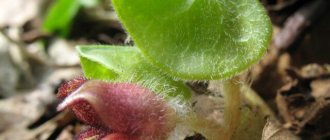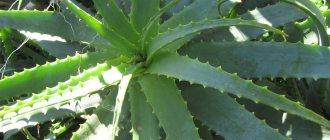The numerous genus of catnips includes about 250 species, of which more than 80 species are found on the territory of Russia. Several of them feel best in our gardens - these are Fassin's catnip, catmint (catnip), K. semi-sessile and K. veined. We will tell you how to grow catnips and why they are good.
- The most popular types of catnips are catnip, or catnip (Nepeta cataria).
- Veined catnip (Nepeta nervosa).
- Siberian catnip, or large-flowered catnip (Nepeta sibirica = Nepeta macrantha, Nepeta grandiflora).
- Sessile catnip (Nepeta subsessilis).
- Fassen's catnip (Nepeta x faassenii).
Catnip (Nepeta) Chettle Blue
Features of catnip
The catnip plant (Nepeta L.) is a member of the Lamiaceae family. This genus includes approximately 250 different species. In nature, catnip is found in temperate latitudes of Europe (24 species) and Asia, and therefore it can also be found in Russia. Catnip also grows in the tropical mountainous regions of northern Africa. It is also found throughout almost the entire territory of the European part of Russia, the Caucasus and Siberia. This perennial plant prefers to grow on rocky, dry soil. The word "Nepeta" is directly related to the city of Nepeta, located in Italy (former Etruscan state). In this city, catnip grew literally at every step.
Catnip is a perennial plant, but annual varieties are also found. The height of the bush can vary from 100 to 120 centimeters. Opposite fragrant single leaf blades have a heart-shaped shape, with teeth located on the edge.
The plant blooms in July. Its whorled inflorescences consist of small white and blue flowers. Bushes with yellow inflorescences are rarely found. The lower petals grow together and form a bell- or funnel-shaped tube that ends in two lips. In this case, there are a couple of spots on the upper lip. Each flower has four stamens, two of which are collected in bunches. The lower pair of stamens is slightly shorter than the upper one, but none of them protrudes from the crown tube. In a flowering plant, the flowers are collected in the upper part of the stem into a cone, and they retain their decorative effect until October. At the end of flowering, fruits, which are nuts, form in place of the inflorescences.
Mint and catnip are related plants. At the same time, the foliage of these plants smells almost the same. However, catnip produces special active volatile substances, which include a compound called nepetalactone. It is capable of influencing the behavior of cats through the respiratory tract.
Catnip, Catnip. Perennial essential oil plant Catnip
general description
The scientific name of the plant is Nepeta Cataira, although people have come up with many other names for it, which reflect its inherent properties: catnip, lemon catnip, catnip, horehound, magpie and others. Catnip (Napeta) belongs to the Yamnotaceae family. Today, over 200 wild species of catnip are known, which are widespread throughout Europe, Asia, America, and Africa. Not demanding on soil and light levels, it creates extensive thickets in wastelands, mountain slopes and ravines, forest clearings, and along roads.
The essential oils contained in the leaves and stems of catnip have a distinct lemon aroma, reminiscent of lemon balm. Many gardeners note that, like the smell of valerian, it attracts domestic cats. In addition, it is an excellent honey plant; during the flowering period, bees, butterflies, bumblebees and other insects constantly circle over it. Some beekeepers specifically plant catnip near the apiary.
The plant has a very powerful, branched rhizome. There are a lot of shoots, but they are usually small. Erect branched shoots form stems that have a soft edge and reach a height, depending on the variety, from 40 cm to 100 cm. Small 2-8 cm in length, triangular leaves of a rich green color have a jagged edge, located on long petioles.
Small flowers of wild varieties have an unsightly off-white petal color with small patches of purple spots. Decorative varieties bred through selection methods are more attractive for their color range: white, pink, blue, purple, lilac, and so on. The first flowers, collected in small clusters, appear in early spring, and the last ones fade in late autumn. In July–August, fruits begin to form on the plant: small brown, smooth nuts.
Planting catnip in open ground
When to plant
There is nothing difficult about planting catnip in open ground. Bushes are planted in garden beds in spring. However, you can also use flower pots and containers for this. If desired, this herbaceous plant can be grown from seeds, but gardeners often use ready-made seedlings for planting; they can be purchased at a specialty store. A faster and easier way to grow catnip is to plant ready-made seedlings. Moreover, they can be planted in open ground both at the beginning of the spring and in the fall.
Optimal landing site
Catnip is not particularly demanding when it comes to growing conditions. However, it grows best in soil that allows water and air to pass through well. On sandy soil the bushes grow more fragrant. Also, when choosing a suitable location, you need to pay special attention to lighting; if possible, it is better to choose the western or southern side of the building. Catnip will also thrive on a quiet slope or in an herb garden that should have good protection from the wind.
Remember that different species and varieties may have different requirements for choosing the optimal planting location. For example:
- Varieties with gray foliage . A well-warmed, sunny area is suitable for growing them, and the soil must be moisture- and breathable. At the same time, in nature, species plants with gray leaves often grow on poor rocky soil, so they do not need frequent feeding and can withstand short-term drought.
- Varieties with green foliage . They grow best in moist, nutritious soil, but the area should not be excessively soggy. They prefer well-lit areas, but also grow quite well in shaded areas. It is not recommended to plant such varieties in well-warmed areas, for example, on the south side of the house.
In order to improve the growth and development of catnip, it is recommended to add a little dolomite flour or lime during planting. When choosing a place for planting, you should also take into account that this herbaceous plant reproduces well by self-seeding.
Rules for sowing seeds
Growing catnip from seeds is quite simple, the main thing is to take into account some nuances:
- Since the seeds are very hard, immediately before sowing they are placed in the freezer, where they should remain for one night.
- After the seed material is removed from the freezer, it is poured into a container with water and left for one day. As a result of such preparation, it will be possible to destroy the protective layer of the seeds, which will significantly speed up their germination.
- Sowing of seeds is carried out in a seedling box or in open ground.
- The first shoots should appear after 1–1.5 weeks. After they grow a little, they are seated.
Planting and care of "Catnip blue carpet"
Planting in open ground
The growth rate of catnip directly depends on the species and variety. Moreover, in the most suitable conditions, the bushes can grow quite dense. Therefore, when planting bushes, a distance of 0.3–0.5 meters should be maintained between them.
As a rule, 3 to 8 catnip bushes can be placed per 1 m2 of land. When planted in containers or pots, the bushes can be planted more densely, thereby creating a beautiful composition.
Step-by-step instructions for planting catnip in the ground:
- remove all weeds from the site and dig up the soil;
- the roots of the seedlings should be immersed in a container of water so that they can be saturated with moisture, thanks to this they will get sick less and quickly take root in a new place;
- make small holes in the prepared soil;
- plant the bushes in the holes to the depth at which they were in the container;
- fill the bushes with soil and make a small depression around them;
- Water the planted catnip well.
Wintering the plant and feeding it
Feeding catnip should be done after pruning it. Organic substances are used for this process. For example, chicken manure is suitable, of which you only need a few grams that fit in a matchbox. The litter is poured into a bucket of water, mixed well and left for two to three days to ferment. Fresh mixture cannot be applied to plants, as they may get burned.
If the soil has not been fertilized for a long time or it is depleted throughout the region, then in the spring it is recommended to additionally feed the plants with minerals.
Covering many plants with spruce branches for the winter began to be practiced back in Soviet times and this method is still used today
It is best to overwinter catnip under dry leaves laid on top of it in a flower bed, or with spruce branches.
One cannot help but mention some unflattering reviews from land owners who planted this plant. The fact is that the smell of catnip, as mentioned above, attracts cats, so if you have this plant on the territory of a summer house or private house, you need to be prepared for uninvited furry guests from all over the area. Cats will not only revel in the pleasant aroma, but they will also roll around in the grass, pressing it to the ground. In addition, there is a possibility that other plants growing near the catnip will also be affected.
Catnip care
Catnip does not require special care, so even an inexperienced gardener can grow it in his garden.
How to water
Newly sown or planted catnip must be watered. It is then watered regularly for several weeks. While the bushes are young, it is recommended to water them once every few days. Mature bushes need additional moisture only during periods of prolonged drought, and watering should be plentiful. Remember that you should not allow liquid to stagnate in the soil, as this can lead to the death of the flower.
Varieties with gray foliage are highly resistant to drought. But still, if there has been no rain for a very long time, then it is better to water the bushes.
Top dressing
Such a herbaceous plant does not require additional feeding. If there are a lot of nutrients in the soil, this will have an extremely negative effect on the growth of the bush. If the soil on the site is too poor, then you can add compost mixed with soil. Also, after the first wave of flowering and pruning, the bushes can be fed with complex fertilizer, thanks to which they will once again enjoy lush flowering.
Trimming
At the end of the first flowering, it is recommended to cut the stems. After quite a bit of time, they will grow back, after which the second wave of flowering will begin. Some varieties can bloom until autumn.
Since this plant easily propagates by self-seeding, timely pruning helps prevent it. However, varieties belonging to the Fassen group do not form seeds.
It is recommended to collect foliage a few days after rain or watering, since at this time it is most fragrant.
Wintering
In autumn, faded bushes are shortened by 2/3 of their height. This will help them survive the winter better and activate the growth of the bush in width. Since the plant is relatively winter-hardy, it is recommended to cover it for the winter only in the coldest regions. The area is covered with spruce branches or covered with felt covers. Remove the shelter immediately after frost has passed to prevent the plant from rotting.
Main characteristics
Due to the specific smell, not all gardeners would like to see this representative of the flora on their site. In addition, in the absence of sufficient snow cover in winter, the catnip may freeze to death. In addition, the plant is not a perennial and to continue the growing season it must be replanted regularly (about once every three to five years). However, not all types of catnip have an unpleasant aroma, but there are quite nice specimens with a palette of blue shades, rare for garden flowers. On the contrary, some lovers use catnip in herbal teas and add them to various homemade preparations.
Catnip actually has a number of medicinal properties. It contains a large amount of vitamin C, which means herbal preparations that contain catnip have an immune-strengthening effect. Catnip also helps with cough, fever, stomach ulcers, lack of appetite, and has a sedative effect. And if you add it to your bath, you can relieve the symptoms of some skin diseases.
The advantages of catnip also include the fact that it can be safely planted where there are children; it is not at all poisonous. This plant is also an excellent honey plant and can attract bees to your site.
Reproduction methods
Catnip grows like a weed and quickly invades new territories. Therefore, it is recommended to plant it in limited areas, for example: rockeries, fenced flower beds, flowerpots, etc.
Dividing the bush
Dividing the bush can be done in autumn or spring (from April to June). Remove a mature bush that has two or three stems from the soil. Dip the earthen ball in water, and when it is completely wet, start untangling the roots. At the same time, try not to injure them. Using a clean, sharp knife, divide the bush into parts, which are then planted in pre-prepared holes. Planted cuttings need regular watering for several weeks. This method of propagation also helps to rejuvenate the bush, whose flowering becomes more sparse over the years. At the same time, heavily overgrown bushes look dried out inside.
Cuttings
Take cuttings during the last weeks of spring or first summer. To do this, choose powerful stems from mature bushes that do not yet bear flowers. For rooting, they are planted in a well-drained soil mixture, provided with systematic watering and protected from direct sunlight. The top of the cuttings can be covered with a transparent cap, while they are provided with regular ventilation and condensation is removed in a timely manner. Rooted sections are planted in individual containers. And with the onset of spring, they are transplanted into the garden.
Growing from seeds
Small boxes are used for sowing seeds, and it is carried out in the last days of August or the first days of September. For sowing, it is recommended to use substrates that include coconut, crushed bark or perlite. At temperatures not lower than 18 degrees, seedlings will appear after 7–15 days.
Pests and diseases
If the summer period turns out to be dry and hot, then the catnip may get powdery mildew. Remove all affected foliage and treat the plant with the fungicidal preparation Nimrod 25 WP or Bayleton 5 WP. For preventative purposes, cover the surface of the soil in the area with mulch and, when watering, do not allow water to get on the foliage.
Sometimes mites and whiteflies settle on bushes; you can get rid of them with the help of acaricidal and insecticidal agents.
Cats, which adore its smell, can cause severe damage to the plant. That is why catnip is not recommended to be planted next to valuable garden crops.
Fragrant catnip - a spice and flowerbed decoration
Use in landscape design and in combination with other plants
Despite the rather simple appearance of the plant, consisting of small inflorescences and fluffy leaves, when positioned correctly, catnip looks very impressive. The variety of varieties allows you to create different compositions. Catnips are used to create alpine slides, rockeries and mixborders.
Catnip goes well with many plants
It is placed in the center of the flowerbed as the dominant shrub. Plants that are not too tall are used to create ridges and decorate borders. Low varieties of flowers in purple and blue colors, as well as red and yellow shades, are planted nearby. Catnip looks great in compositions with phlox, meadow geranium, anafalis, and santolina.
Types and varieties of catnip with photos and names
Experts know about 251 species of catnip. Some species are cultivated as ornamental plants, and Faassena's catnip (Faassena N. × faasenii), which is decorated with fragrant foliage and light purple inflorescences, is especially popular. In this case, catnip or catnip (N. Cataria) is used to prepare infusions that have a psychedelic effect and are used in herbal medicine. Some species contain the substance nepetalactone, which has an unusual effect on cats, making them euphoric. At the same time, animals often destroy catnip bushes themselves.
Species found in Russia
The following types of catnip are found on the territory of Russia:
Mussini's catnip, or Musina (Nepeta mussinii Spreng. ex Henckel)
The size of the bush is 45x60 centimeters, it is decorated with violet-blue inflorescences and fragrant leaves that do not contain nepetalactone.
Transcaucasian catnip (Nepeta transcaucasica)
Hungarian catnip (naked) (Nepeta pannonica L. syn. N. nuda L.)
It grows in Ukraine, Asia, Belarus and southern Russia. The surface of the erect stem is bare or slightly pubescent. In diameter it reaches from 0.3 to 0.5 cm, and its height can vary from 0.5 to 1.2 m. The bushes bloom in July and fade in September. All this time they are decorated with purple inflorescences. The species prefers to grow along roadsides and on dry slopes.
Catnip grandiflora (Nepeta grandiflora M. Bieb.)
The height of the bush is about 0.7 m. Its flowers are large bluish-lilac.
Catnip (Nepeta cataria L.)
The size of the bush is 100x60 centimeters. Fragrant greenery grows on it, and during flowering pinkish or purple-white inflorescences are formed. The "Citriodora" variety has foliage that smells pleasantly of citrus.
K. kubansky (Nepeta kubanica)
This species grows in the southern regions. The height of the bush reaches from 0.5 to 0.7 m, while its flowering is observed from June to September.
Siberian catnip (Nepeta sibirica)
The bush is decorated with fragrant foliage and dense inflorescences of lavender color. The size of the bush is 40x60 centimeters. The variety “Blue Beauty” differs from the main type in blue inflorescences.
Catnip (Nepeta nervosa)
The size of this low-growing bush is 30x30 centimeters. It has fragrant foliage and blue inflorescences.
In addition, gardeners are interested in such species as: Italian catnip (Nepeta italica), semi-sessile catnip (Nepeta subsessilis), Isfahan catnip (Nepeta ispahanica) and Ukrainian catnip (Nepeta ucranica).
Low growing species with gray foliage
The most widely cultivated species are drought-resistant perennial species with gray foliage. They grow well in sunny, warm areas in well-drained, loose soil. The bushes reach a height of only 20 to 30 centimeters, but they grow greatly in breadth and are capable of forming a dense carpet. That is why such species are used for decorative framing of flower beds, the base of a statue or a fountain. Their stems are intertwined with shoots of other garden crops. Thanks to this, for example, catnip will be able to decorate a flower bed with irises when they fade. Catnip (Nepeta racemosa) is especially good at this task.
The best varieties:
Variety "Superba"
Experienced gardeners recommend paying attention to this variety, which was created in 1804. This plant is one of the most spectacular and powerful low-growing varieties. Flowering lasts from the last days of April until the first days of July. At this time, many bluish-lilac inflorescences form on the bushes. With timely pruning, the bushes will decorate the inflorescences until autumn.
Variety "Grog"
It is similar to the Superba variety. This plant differs from other varieties with its pronounced characteristic aroma of mint and fresh lemon.
Variety "Odeur Citron"
Its foliage smells like lemon.
Variety "Snowflake"
This plant is decorated with white inflorescences, which is very rare for catnip.
Tall species and varieties with gray foliage
In landscape design, species such as grandiflora catnip and Fassena are especially popular. These are fast-growing species, the height of the bushes is about 0.6 m.
Faassena's catnip - this perennial can reach a height of about half a meter. The stems are covered with silver-green, heart-shaped foliage. Flowering occurs in May–October. The inflorescences are colored violet-blue. Absolutely all parts of the bush are fragrant, but the foliage exudes the strongest aroma. A well-lit area is best suited for growing this species, and the soil should be air- and water-permeable, as well as saturated with nutrients. Short droughts are not scary for such a plant. However, during a long dry period it is necessary to water the bushes. Vigorous varieties need staking to a support. At the end of the first flowering, it is recommended to prune the catnip, thanks to which it will bloom again. Also, formative pruning has a positive effect on the reproduction of catnip. This species is a valuable honey plant, and therefore it attracts pollinating insects to the site. It is also capable of repelling some insects (for example, mosquitoes and flies).
Popular varieties of Fassin's catnip:
Catnip
This variety blooms much later than others, while its branching shoots are decorated with delicate foliage;
Hills Giant
The bushes of this English variety can reach a height of about a meter; dark-colored inflorescences form on them;
Walkers Low
Inflorescences are dark purple.
The best varieties of catnip grandiflora:
Six Hills Giant
Its inflorescences are bluish-purple, they look great together with purple geraniums or roses.
Dawn to dusk
The flowers are pink.
"Gletschereis". This variety differs from others in its delicate silver-blue color of flowers. Thanks to its small foliage, this plant combines perfectly with other crops that have gray leaf blades.
In nature, large-flowered catnip can be found in the Caucasus and Eastern Europe. Despite the name of this species, its flowers can hardly be called large. The stems can reach a height of about 1.2 meters. Vigorous ornamental herbaceous plants and roses look great next to such a catnip.
The most popular varieties of catnip grandiflora among gardeners are:
- "Pool Bank" and "Wild Cat" - purple-blue inflorescences;
- "Blue Danube" - has compact bushes;
- “Dawn to Dusk” - pinkish inflorescences.
Species with green foliage
There are also species of catnip with green foliage that grow best in shaded areas. In order for such a flower to grow normally and develop correctly, it is necessary to more carefully choose a place for planting.
Types with green leaves:
Catnip (Nepeta subsessilis)
The homeland of this plant is Japan, and it differs from other species in having very large flowers. This shade-loving plant is recommended to be grown next to Brunnera macrophylla, Lamiaceae, hostas, geraniums or Canadian phlox.
Siberian catnip (Nepeta sibirica)
When planted in nutritious soil, it forms powerful shoots. However, for good growth it is necessary that other garden crops grow next to it, forming dense bushes. Compared to the species plant, the Souvenir d'André Chaudron variety is more durable; it looks great next to daylilies and roses.
Kuban catnip (Nepeta kubanica) and Nepeta pratti
These species are the most widespread in culture. During flowering, the bushes are decorated with lush inflorescences consisting of large flowers. Such catnips look great in flower beds next to Astrantia major or triple cream bell (Campanula lactiflora).
5.How catnip overwinters
In central Russia and in more southern regions, plants overwinter without any problems - only bushes of the first year of life will need shelter. In more severe conditions - with the onset of severe frosts or in the event of insufficient snow cover, catnip may freeze. To protect the flower, before the onset of night frosts, the shoots are cut off, leaving only 5 - 7 cm of growth and covered with a layer of soil or sprinkled with humus. The area can be covered with non-woven material on top, sprinkled with dry fallen leaves, or laid with spruce branches. I remove the cover in early spring, as soon as the snow melts, otherwise the plants may scatter.
↑ Up,
Application
Catnip is used not only as an ornamental plant, but also as a honey plant, in herbal medicine and on the farm.
In landscape design, honey plant
Catnip is often planted in rock gardens and English-style gardens, and is also used to frame lawns. It is also planted in poorly cultivated, uneven areas, where it can replace a lawn. It is also used to decorate steep slopes.
Catnip is also used to attract butterflies and bees to the site. It is recommended to plant it next to the apiary, as it is an excellent honey plant (from 150 to 200 kg of honey per hectare).
In cooking
Young stems of such a plant are placed in sauces, soups or vegetable salads. Chopped dried leaves are added to meat dishes. Not long ago, tea made from catnip leaves, which contains a lot of vitamin C, was very popular.
Collection of foliage and stems is carried out after flowering. They are collected in bunches and hung in a well-ventilated, dry place, protected from direct sunlight.
Medicinal properties
Dried catnip flowers are used in herbal medicine to make tincture or tea. This plant has several beneficial properties:
- improves the functioning of the digestive system, often used for flatulence;
- used for upper respiratory tract infections to thin mucus;
- tonic and diaphoretic effect.
To get healing tea, simply pour freshly boiled water over the raw material and let the mixture brew.
On the farm
Catnip extract is used by summer residents to kill aphids, and also to repel cockroaches, mosquitoes and termites. The smell of catnip repels rats.
Effect on cats and flies
Approximately 2/3 of all cats are sensitive to the aroma of catnip. Moreover, this feature is inherited. Animals are attracted to the substance nepetalactone. A cat can lie in the bushes for ten minutes, lick them and meow loudly, after which she loses interest in him for about a couple of hours. Kittens only begin to show interest in him at the age of 5 or 6 months. At the same time, older cats are practically not interested in catnip.
Catnip can repel house flies, as well as the autumn fly (Stomoxys calcitrans) and cockroaches.
How to distinguish CATNISH from MELISSA?
6. Medicinal properties and contraindications
The pleasant aroma of catnip is due to the presence of essential oils that have antimicrobial and antibacterial properties. Volatile oils are widely used both in cooking - as a seasoning or flavoring of refreshing drinks, and in perfumery and cosmetics.
Flower extract is added to shampoos to prevent hair loss. Evening compresses with dry shoots and leaves can help get rid of bags under the lower eyelids.
Catnip contains vitamins C, A, B and PP, saponin, which can form emulsions and remove bile and various toxins from the body, lowers cholesterol, serves as a powerful antioxidant and strengthens the immune system.
↑ Up,
Glycosides in catnip can kill bacteria, have a sedative and mild laxative effect on the body, are used for respiratory diseases as an expectorant, and regulate the activity of the heart.
Carvacrol is a substance that can kill many harmful microorganisms in the intestines and, at the same time, is harmless to beneficial bacteria and relieves inflammatory processes.
The tannins contained in catnip provide an enveloping effect and have a positive effect on the state of the digestive system, as well as promoting the removal of toxins.
↑ Up,
Medicinal raw materials are used to relieve headaches and increase appetite. In aromatherapy, essential oil is used as a remedy that can relieve depression and improve mood and overall tone.
Fiber allows you to enhance intestinal motility. Plant mucus has a positive effect on the functioning of the digestive system and helps with gastritis. Minerals such as iron, phosphorus, sodium, potassium and magnesium, as well as calcium, are present in small quantities in the green mass.
Ingestion of herbal preparations helps relieve painful spasms, and external use allows you to get rid of many skin problems - including getting rid of teenage acne, boils, and relieves itching due to scabies. Having vasodilating properties, catnip lowers blood pressure, and also promotes the rapid breakdown of glucose and is used for diabetes.
↑ Up,
The herb is used as a diaphoretic and antipyretic for colds. The hemostatic effect allows you to quickly heal skin damage. You can even get rid of helminths using catnip. In women, herbal infusions normalize the menstrual cycle.
It is believed that the aroma of the plant is also not tolerated by rodents - by placing small bouquets in the house you can get rid of rats and mice. The repellent effect also extends to some harmful insects - such as aphids, as well as cockroaches and mosquitoes. Catnip even repels termites and house flies.
↑ Up,
The ability of the flower to retain a pleasant aroma even during heat treatment allows you to add dried raw materials to main courses - for example, meat and fish, as well as side dishes and various soups. In veterinary medicine, catnip is used as a sedative for cats.
Contraindications for use are possible allergic reactions; you should also not use catnip during pregnancy and lactation.
↑ Up,
6.1.Collecting catnip
Interestingly, proper preparation and drying of catnip allows not only to preserve the pleasant citrus aroma, but can also make it more intense. If shoots are used as medicinal raw materials, the best time for harvesting will be the end of flowering. It is by the time the buds wither that the plants will contain the maximum amount of useful substances. The weather also affects the collection of shoots - if harvested in the rain, the aroma will be noticeable; it is better to cut the stems after the dew has dried in the morning, on a warm and sunny day.
The shoots are cut with a garden knife or pruning shears, tied into small bunches and hung upside down under a canopy. During the drying process, raw materials should not be exposed to direct sunlight - they can destroy many useful compounds. In general, the process takes about 7 days. After drying, the raw materials are crushed and collected in small paper bags or canvas bags. Store dry leaves and shoots in a cool and dry place, using as needed for 2 to 3 years after collection.
↑ Up,











